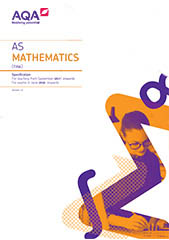Specification at a glance
This qualification is linear. Linear means that students will sit all their exams at the end of the course.
Subject content
Core content- OT1: Mathematical argument, language and proof (page 11)
- OT2: Mathematical problem solving (page 11)
- OT3: Mathematical modelling (page 12)
- A: Proof (page 12)
- B: Algebra and functions (page 12)
- C: Coordinate geometry in the (x,y) plane (page 13)
- D: Sequences and series (page 14)
- E: Trigonometry (page 14)
- F: Exponentials and logarithms (page 15)
- G: Differentiation (page 16)
- H: Integration (page 16)
- J: Vectors (page 16)
- K: Statistical sampling (page 17)
- L: Data presentation and interpretation (page 17)
- M: Probability (page 18)
- N: Statistical distributions (page 18)
- O: Statistical hypothesis testing (page 19)
- P: Quantities and units in mechanics (page 19)
- Q: Kinematics (page 19)
- R: Forces and Newton’s laws (page 20)
Assessments
| Paper 1 |
|---|
|
What's assessed Content from the following sections:
|
|
How it's assessed
|
|
Questions A mix of question styles, from short, single-mark questions to multi-step problems. |

| Paper 2 |
|---|
|
What's assessed Content from the following sections:
|
|
How it's assessed
|
|
Questions A mix of question styles, from short, single-mark questions to multi-step problems. |
